Cysteine is a sulfur-containing amino acid alongside methionine. It is jointly responsible for the formation of the secondary, tertiary and quaternary structure of proteins. A lack of cysteine leads, among other things, to a weakness of the immune system.
What is cysteine?
Cysteine is a sulfur-containing amino acid with a thiol group (-SH). It can form disulfide bridges with another cysteine within a protein chain or between the protein chains. The secondary, tertiary and quaternary structures are formed by folding the chains. Only L-cysteine is built into the proteins.
Racemates and D-cysteine play no biological role. Cysteine is a non-essential amino acid. It can be synthesized in the body from methionine. However, since methionine is an essential amino acid and must always be supplied from the outside, cysteine is referred to as a semi-essential amino acid. Cysteine is not contained in all proteins, but is particularly found in structural proteins of the connective tissue, in the keratin of the hair, in the nails and the cornea, in insulin and in some enzymes.
The structural proteins are formed by the disulfide bridges. The thiol group plays an important catalytic role in the cysteine-containing enzymes. Free cysteine is very reactive in an aerobic environment and is irreversibly broken down. It is therefore stored in the form of the tripeptide glutathione for constant supply to the body.
Function, effect & tasks
Cysteine fulfills a variety of functions in the organism. These functions are derived from the reactive thiol group. In this way, disulphide bridges are formed within the protein chains, which help determine the secondary and tertiary structure of the protein. Disulfide bridges between cysteine building blocks of different protein chains form the quaternary structure.
This creates stable proteins that can also network with one another. However, cysteine is also contained in many enzymes. There, cysteine residues form so-called iron-sulfur clusters with iron. Here the thiol groups can catalytically support important biochemical syntheses. In addition to ADP and vitamin B5, coenzyme A also contains the amino acid cysteine. Here, too, important reactions of the energy metabolism are catalyzed by the thiol group. Furthermore, cysteine is also the starting material for the formation of taurine. Taurine is an aminoethanesulfonic acid and fulfills a number of functions.
It influences the signal transmission in the nervous system and the heart function by supporting the ion transport of sodium, potassium and calcium through the membrane. In addition, taurine is a powerful antioxidant, which protects the tissues from severe oxidative damage. A lack of taurine can lead to kidney damage and immune system disorders. Finally, taurine also has anti-inflammatory effects. Cysteine is also the starting material for the tripeptide glutathione. Almost all cells contain high concentrations of glutathione. It acts as a storage form for cysteine, because free cysteine is irreversibly broken down very quickly and is therefore no longer available to the body.
Glutathione is also a powerful antioxidant and indispensable for the body. It also plays a huge role in the biotransformation of drugs, toxins, and foreign substances in the liver. A disturbed glutathione production leads to death within a short time.
Education, occurrence, properties & optimal values
Cysteine is not an essential amino acid. However, it is made in the body from the essential amino acid methionine. Methionine must be taken in with food.
This is why cysteine is also known as a semi-essential amino acid. If there is no cysteine in the diet, the methionine requirement in an adult is 13 to 16 milligrams per kilogram of body mass. If there is an excess of cysteine in the diet, the figures for methionine requirements vary between 5 and 13 milligrams per kilogram of body mass. Meat, fish, milk, nuts, wholemeal flours of wheat and corn, unpeeled rice, soybeans or peas have high cysteine contents. A daily dose of 0.5 to 1.5 grams of L-cysteine is recommended.
However, the need for cysteine and methionine increases with chronic diseases such as cancer, Parkinson's or osteoarthritis, because more free radicals are formed here. The drugs are also metabolized faster at higher concentrations.
You can find your medication here
➔ Medicines to strengthen the defense and immune systemDiseases & Disorders
A lack of cysteine can lead to a weakened immune system. In addition, the detoxification mechanisms in the liver no longer function optimally. These effects are mediated via the storage form of cysteine, glutathione.
Normally the body has a sufficient supply of cysteine. A balanced diet contains enough cysteine and methionine. Deficiency symptoms can occur with a one-sided diet or an extreme reduction diet. However, there are also some diseases in which there is an increased need for cysteine. These diseases increase the formation of free radicals on the one hand and the formation of toxins on the other, which have to be broken down in the liver. These diseases include respiratory diseases, liver damage, rheumatoid arthritis, alcoholism, chronic degenerative diseases, Parkinson's, arteriosclerosis and poisoning from drugs, heavy metals, cigarette smoke and other toxins.
An additional dose of L-cysteine can strengthen the immune system. It has also been shown to be effective in osteoporosis. In heavy metal poisoning, the reactive thiol groups of cysteine and glutathione form complexes with the heavy metal ions, which are then water-soluble and can be quickly removed from the body. In addition to a cysteine deficiency, an excess of cysteine can also occur.
An excess of cysteine can be caused by overdosing as well as by genetically caused delayed cysteine breakdown. There is an increased excretion of cysteine in the urine (cysteinuria). In about 50 percent of patients, kidney stones or urinary stones develop from precipitated cysteine.
You can do that yourself
The best way to flush out cystine stones is to drink plenty of tap water. The family doctor will also prescribe various urinary and kidney teas or light medicines that encourage the urge to urinate and thus effectively help remove the painful stones.
This simple measure is supported by a healthy diet and exercise. Regular exercise increases the chances that the stone will loosen and drain down the urethra. Endurance sports such as running, swimming or walking as well as various physiotherapy exercises are particularly effective. Massages and saunas are also available. Both promote the circulation and thereby help break down cystine stones. Various home remedies such as cranberry juice, warm beer or applications with anise also have a beneficial effect on urinary and kidney stones.
If the stone has not been flushed out after three to four days at the latest, you should see a doctor with the symptoms. It is possible that the cystine stone is too large and needs to be removed by surgery, or there is a chronic disease. In any case, a health professional should be consulted with urinary stones to prevent complications.

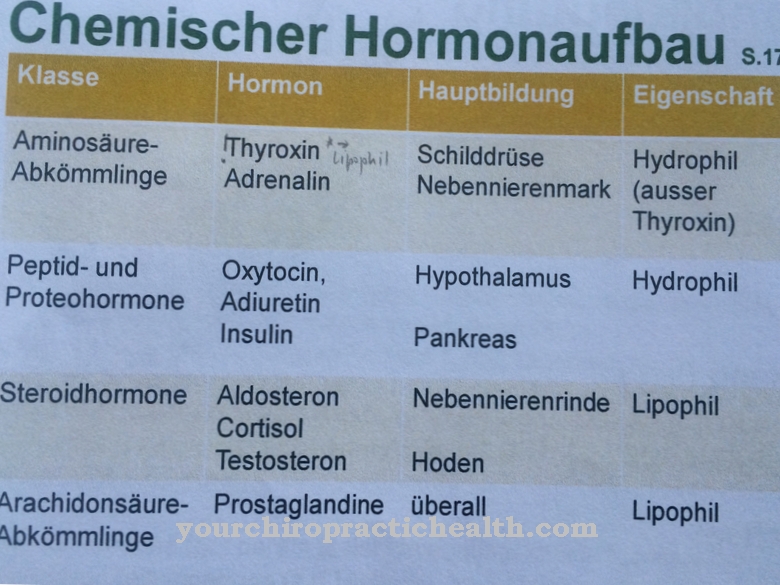
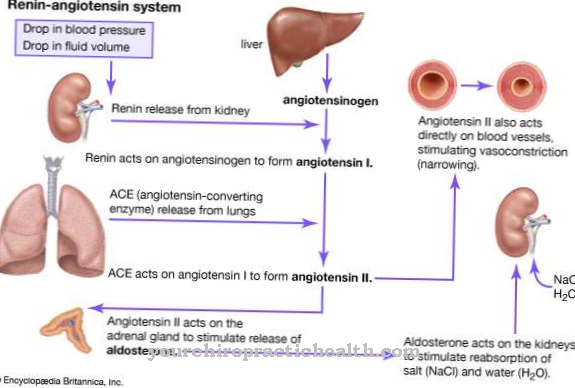
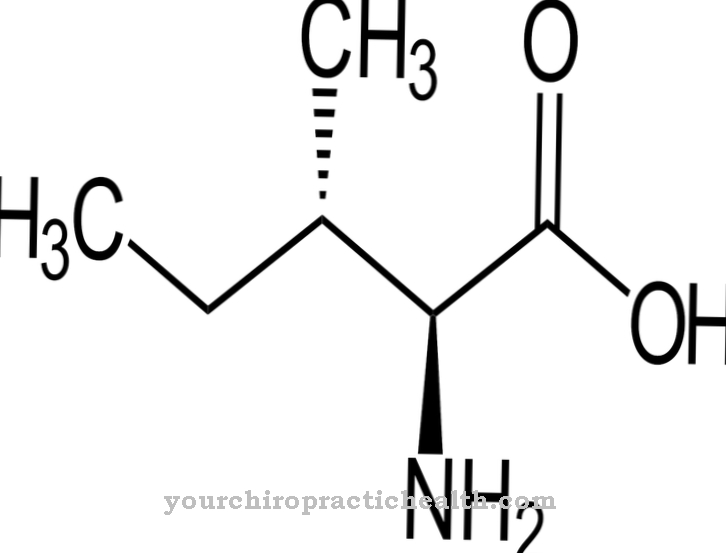
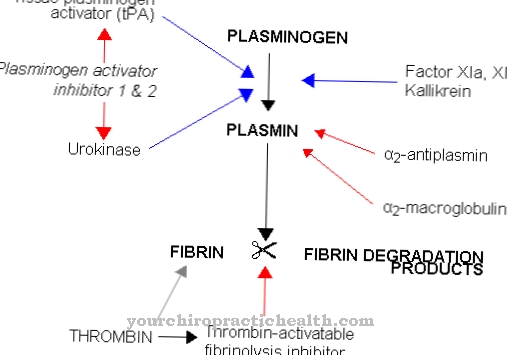
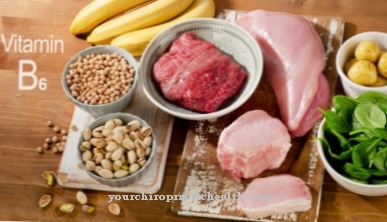
.jpg)





















.jpg)